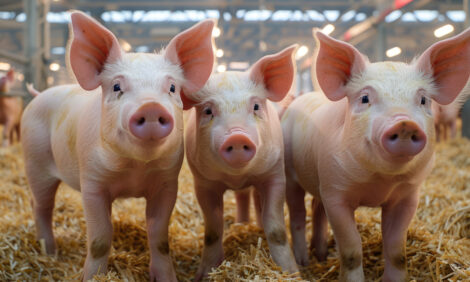



Positive Impact of Piglet PCV2 Vaccination on Fattening Pig Performance
PCV2 is not only involved in PMWS (Post Weaning Multi-systemic Syndrome) or PCVD-systemic disease (PCVD-SD) but also in a large array of pathological presentations including subclinical infections (PCVD-SI), write I. Corrégé, G. Perreul, B. Boivent, O. Merdy, F. Joisel and A. Hemonic.PCV2 vaccination has been largely used as an efficient tool against mortality, lesions, viremia, excretion and for the improvement of growth. Nevertheless, although it is an important driver of profitability, and mainly due to practical constraints, very few controlled trials have looked at feed conversion efficiency.
In this study we tested the efficacy of PCV2 piglet vaccination in addition to sow vaccination, in a herd with a subclinical PCV2 circulation, on growth performance and feed conversion efficiency in the fattening period.
Material and Methods
Sows used to be vaccinated against PCV2 for at least 4 years. At 6 weeks of age, 168 piglets from the same farrowing batch were allocated into 84 pairs of similar piglets according to sex, weight, parity of their dam and size of their litter and in which one piglet was vaccinated (CIRCOVAC®, 0.5 ml, IM) and one was given a placebo (saline, 0.5 ml IM).
Both groups (84 vaccinated and 84 placebo) were exposed at the end of the fattening period to the natural circulation of PCV2, as evidenced by PCV2 antibody seroconversion from the 17th week of life. Individual bodyweights, feed consumption and slaughterhouse data were registered.
Furthermore, clinical score, mortality and lung lesions were also individually recorded.
Results and discussion
PCV2 vaccination in piglets at 6 weeks of age had no impact on growth performance during the post-weaning period.
During the fattening period, the average daily weight gain was not different between groups, as well as feed consumption. However, the Feed Conversion Ratio (FCR) was significantly (p<0.01) decreased in the vaccinated group by 0.10 (2.67 against 2.77).
These results may be explained by the very high growth performance during fattening in the two groups (917 g/d). Mortality was very low in the two groups. The other criteria (clinical signs, lung lesions and carcass traits) were not found significantly different.
Conclusion
In this high performing farm with a subclinical circulation of PCV2 in the fattening period, piglet PCV2 vaccination on top of sow vaccination in comparison to PCV2 vaccination in sows only induced a significant FCR improvement during the fattening period.
Presented at the 2015 European Symposium of Porcine Health Management
August 2015









